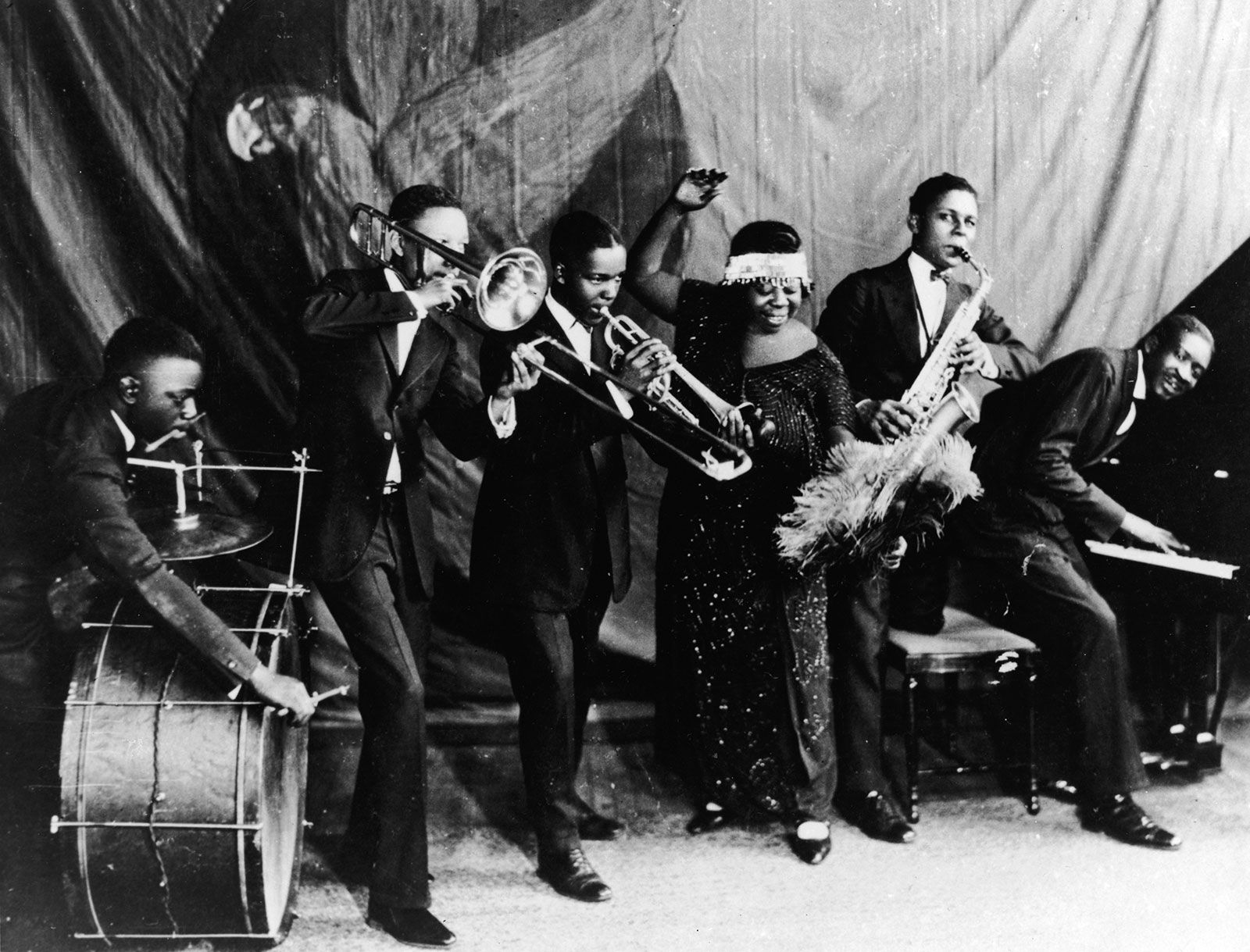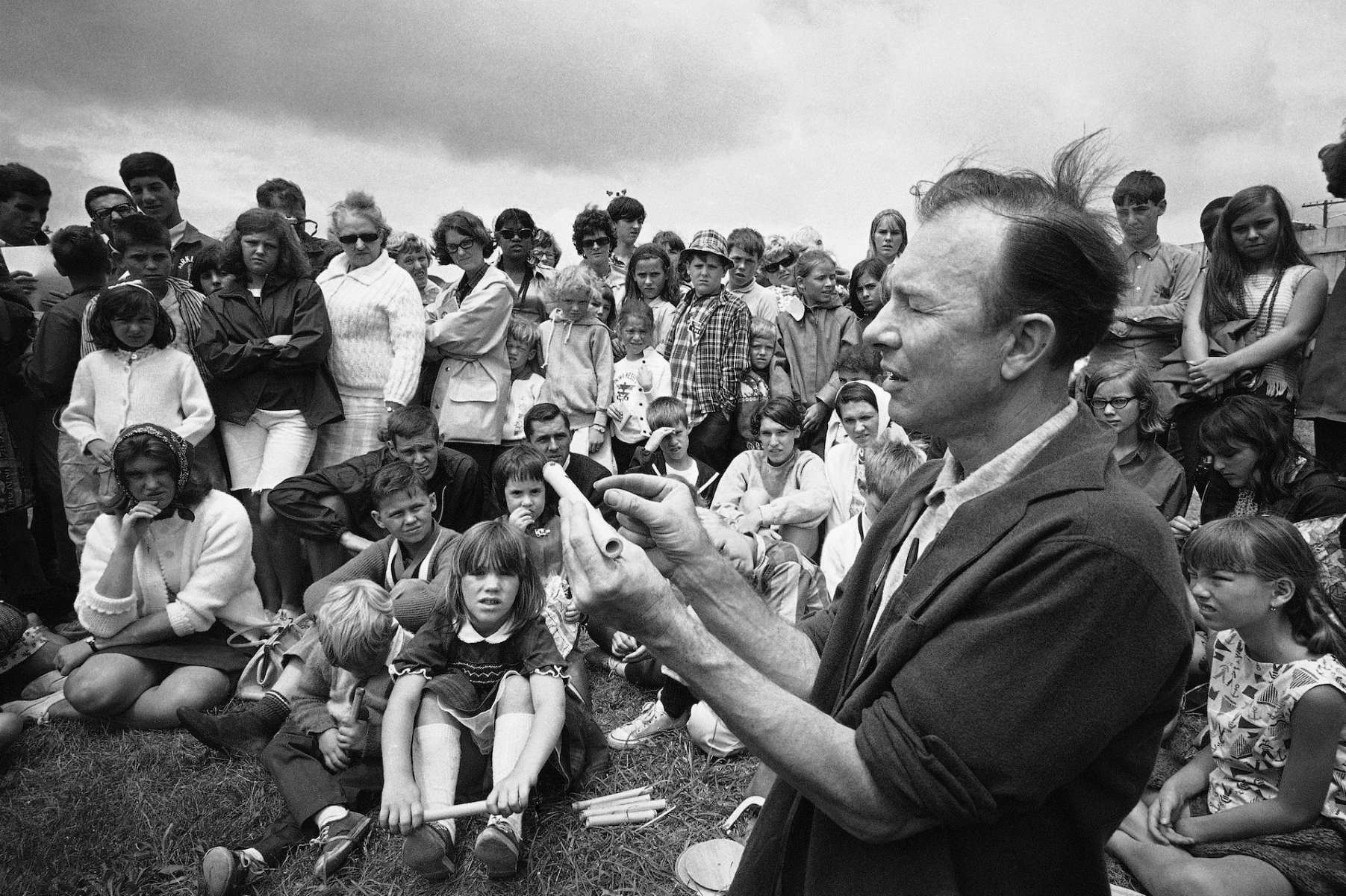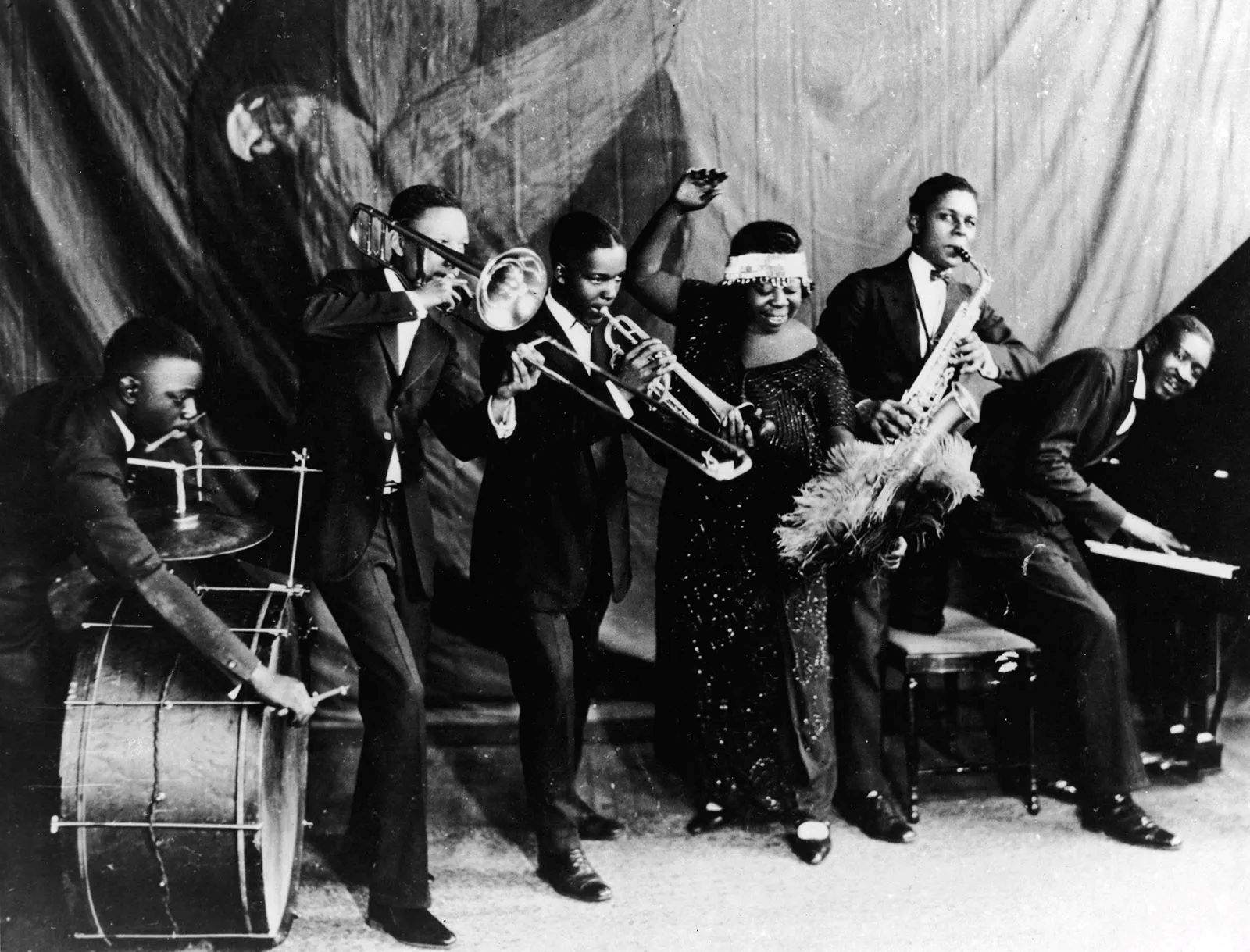Home>Genres>Rock>How Did Jazz Music And Blues Music Influence Rock Music?


Rock
How Did Jazz Music And Blues Music Influence Rock Music?
Modified: February 15, 2024
Discover how the influential sounds of jazz and blues shaped the evolution of rock music. Uncover the rich history and profound impact of these genres on the creation of rock's rebellious spirit.
(Many of the links in this article redirect to a specific reviewed product. Your purchase of these products through affiliate links helps to generate commission for AudioLover.com, at no extra cost. Learn more)
Table of Contents
Introduction
Rock music has been one of the most influential and popular genres of music for decades. Its energetic beats, powerful guitar riffs, and poignant lyrics have captivated listeners all around the world. But did you know that rock music wouldn’t be what it is today without the significant influence of jazz and blues? These two genres, with their rich history and unique characteristics, played a crucial role in shaping the sound and style of rock music.
Jazz music emerged in the late 19th and early 20th centuries, primarily in African American communities in the Southern United States. It was characterized by its improvisational nature, syncopated rhythms, and emphasis on individual expression. Blues music, on the other hand, originated around the same time, also within African American communities. It was deeply rooted in African musical traditions and featured soulful vocals, melancholic melodies, and lyrics that often reflected the hardships and struggles of the African American experience.
The influence of jazz and blues on rock music is undeniable. As rock music began to take shape in the mid-20th century, artists and bands looked to these genres for inspiration and incorporated their elements into their own sound. This fusion of styles led to the birth of a new genre: rock and roll.
In this article, we will explore the origins of jazz and blues music, delve into their unique elements, and examine how they influenced the development of rock music. We will also look at the evolution of rock music with jazz and blues influences, and highlight some famous rock songs that showcase these musical connections. So, grab your air guitar and get ready to dive into the fascinating world of rock music’s jazz and blues roots!
Origins of Jazz Music
The roots of jazz music can be traced back to the late 19th century in New Orleans, Louisiana. It was born out of the cultural melting pot that characterized the city at the time, with influences from African, Caribbean, and European musical traditions.
One of the key contributors to the development of jazz was the African American community, particularly those who had been enslaved and their descendants. They brought with them the rhythms, melodies, and singing styles of their African heritage, which merged with the European musical traditions they encountered in America. This blending of cultures created a unique musical language that would become the foundation of jazz.
The early forms of jazz were played in New Orleans’ African American communities, primarily in the brothels and bars of the city’s red-light district. Musicians would gather and perform using instruments such as the trumpet, cornet, trombone, clarinet, and piano. These gatherings, known as “jam sessions,” involved improvisation, where musicians would spontaneously create melodies and solos within a basic framework.
As jazz continued to evolve, it spread beyond New Orleans and gained popularity in cities like Chicago, New York, and Kansas City. Musicians began to experiment with different musical ideas and techniques, incorporating elements of ragtime, blues, and even classical music. This experimentation led to the development of various jazz styles, such as swing, bebop, and cool jazz, each with its own distinctive characteristics.
Notable jazz musicians of the early years include Louis Armstrong, Duke Ellington, Jelly Roll Morton, and Bessie Smith. Their innovative playing styles and compositions laid the groundwork for the future of jazz and influenced generations of musicians to come.
Elements of Jazz Music
Jazz music is known for its unique and distinctive elements that set it apart from other genres. These elements contribute to its improvisational nature, syncopated rhythms, and expressive melodies. Here are some key elements that define jazz music:
Swing: Swing refers to the rhythmic feel and groove of jazz music. It involves a slight delay in the placement of beats, creating a sense of syncopation and forward momentum. The swing rhythm is often achieved through the use of “swung” eighth notes and a relaxed, bouncing feel.
Improvisation: Improvisation is a fundamental aspect of jazz music. It allows musicians to spontaneously create melodies, solos, and variations within the structure of a song. Jazz musicians develop their improvisation skills through years of practice and a deep understanding of music theory and harmony.
Syncopation: Syncopation is the placement of accents or rhythmic emphasis on weak beats or offbeats. Jazz music is known for its intricate syncopated rhythms, which create a sense of energy and excitement. Syncopation adds a sense of unpredictability and complexity to the music.
Call and Response: Call and response is a musical phrase where one musician (or group of musicians) plays a musical statement, and another musician (or group) responds with a contrasting or complementary phrase. This technique is often used in jazz to create dialogue and interaction between musicians.
Blue Notes: Blue notes are microtonal or flattened notes that are often used in jazz and blues music. These notes add a distinctive flavor to melodies and help to create the signature sound and emotional depth of jazz music. Blue notes are typically played with expressive bending and sliding techniques.
Complex Harmonies: Jazz music is known for its harmonically rich and complex compositions. Jazz musicians often experiment with extended chords, altered chords, and chord substitutions, creating a sense of harmonic tension and sophistication. These complex harmonies provide a solid foundation for improvisation and creative exploration.
Jazz music incorporates a wide range of instruments, including brass (trumpet, trombone), woodwinds (saxophone, clarinet), piano, drums, and bass. The interplay between these instruments, along with the use of dynamics, articulation, and phrasing, adds depth and texture to jazz music.
The combination of these elements makes jazz music a truly unique and vibrant genre, allowing for endless creativity and expression. It is these very elements that have had a profound influence on the development of rock music, shaping its sound and pushing boundaries in exciting ways.
Influence of Jazz on Rock Music
The influence of jazz on rock music is undeniable, as the two genres share a number of common elements such as improvisation, syncopation, and a focus on individual expression. Here are some ways in which jazz has influenced the development of rock music:
Instrumentation: Jazz introduced new and diverse instruments to the rock music landscape. Musicians began incorporating saxophones, trumpets, and other brass instruments into their rock bands, adding a jazz-like flavor to the sound. This expanded the sonic possibilities of rock music and allowed for greater experimentation and depth in arrangements.
Improvisation: The improvisational nature of jazz had a significant impact on rock music. Many rock musicians started incorporating improvised solos, extending song structures, and experimenting with musical ideas during live performances. This brought a new level of spontaneity and energy to rock music, giving it a more dynamic and captivating live experience.
Complex Harmonies: Jazz’s use of complex and sophisticated harmonies influenced rock musicians to explore beyond traditional chords and progressions. They began incorporating extended chords, altered tones, and unconventional chord progressions to create more musically interesting and unique compositions. This harmonic complexity added depth and richness to rock music.
Rhythmic Innovation: Jazz’s emphasis on syncopation and rhythmic experimentation had a profound impact on the rhythmic aspects of rock music. Rock musicians started incorporating syncopated rhythms, polyrhythms, and intricate drum patterns, injecting a sense of groove and sophistication into their music. This rhythmic innovation became a signature element of many subgenres of rock, such as progressive rock and jazz-rock fusion.
Fusion Genres: The influence of jazz on rock music led to the emergence of fusion genres that blended the two styles. Jazz-rock fusion, for example, combined the improvisational nature of jazz with the power and energy of rock. Artists like Miles Davis, Weather Report, and Jeff Beck pioneered this fusion, creating a new and exciting sound that pushed musical boundaries.
Experimentation: Jazz’s spirit of experimentation and pushing musical boundaries inspired rock musicians to venture into uncharted territories. They started incorporating unconventional song structures, unconventional instrumentation, and unconventional recording techniques. This experimentation led to the birth of progressive rock, psychedelic rock, and other genres that pushed the boundaries of what rock music could be.
The influence of jazz on rock music continues to be felt today, as many contemporary rock artists draw inspiration from jazz’s musical language and incorporate jazz elements into their sound. This cross-pollination of genres has enriched the world of rock music and has kept it evolving and exciting for audiences around the world.
Origins of Blues Music
The origins of blues music can be traced back to the African American communities in the rural South of the United States in the late 19th and early 20th centuries. It emerged as a form of musical expression in response to the hardship and experiences of African Americans, particularly those who were enslaved or faced discrimination and segregation.
Blues music grew out of a fusion of African musical traditions, European folk music, and work songs. African Americans developed unique musical styles that incorporated elements such as call and response singing, vocal improvisation, and the use of blue notes.
One of the earliest forms of blues was the work songs or field hollers, which were sung by enslaved African Americans during their labor in the fields. These songs were a means of communication, expressing their struggles, hopes, and emotions. The call and response structure of these songs laid the foundation for the blues’ characteristic style.
As African Americans migrated to urban areas in the early 20th century, particularly to cities like Chicago, Memphis, and Detroit, the style of blues evolved. It incorporated influences from jazz and other genres, leading to the development of different regional styles such as Delta blues, Chicago blues, and Piedmont blues.
Blues music was traditionally performed by individuals or small groups, often featuring a solo singer accompanied by a acoustic guitar, harmonica, or piano. These intimate performances allowed for emotional storytelling and improvisation, as the musicians could freely express their feelings and experiences through their music.
Notable pioneers of blues music include B.B. King, Robert Johnson, Muddy Waters, and Ma Rainey. Their recordings and performances laid the groundwork for the later development of rock music, as their powerful vocals, raw emotions, and innovative guitar techniques influenced future generations of musicians.
Elements of Blues Music
Blues music is characterized by its distinctive elements that evoke a deep sense of emotion and storytelling. These elements are crucial to the blues’ expressive nature and have had a profound influence on the development of various music genres, including rock music. Here are some key elements of blues music:
12-Bar Blues Structure: The 12-bar blues structure is the backbone of blues music. It consists of three sections, each comprising four bars of music. This structure provides a framework for improvisation and allows musicians to explore variations and express their individuality within the established pattern.
Call and Response: Call and response is a fundamental aspect of blues music. It involves a musical phrase or line sung or played by one musician or group, followed by a response or answer by another musician or group. This technique creates a dialogue between the performers and adds a sense of interaction and intensity to the music.
Blue Notes: Blue notes are an essential component of blues music. They are flattened or bent notes that create a distinct tonal quality and evoke feelings of melancholy, longing, and sorrow. Blue notes are often achieved by bending the strings of a guitar or using specific vocal techniques, and they contribute to the emotional depth and authenticity of the blues sound.
Expressive Vocals: The vocals in blues music are soulful, passionate, and deeply expressive. Blues singers deliver their lyrics with raw emotion, using techniques like vocal slides, moans, and shouts to convey their feelings. The heartfelt vocals of blues music invite listeners into a personal journey and serve as a vehicle for storytelling.
Instrumentation: Blues music typically features a wide range of instruments, including guitars, harmonicas, pianos, drums, and bass. The guitar, in particular, plays a crucial role in blues, with musicians using techniques like bending strings, vibrato, and sliding to create a distinctive sound and express a range of emotions. The harmonica is another prominent instrument in blues, often used to accompany the vocals and add melodic elements.
Rhythm: The rhythm of blues music is typically steady and driving, with a focus on creating a groove. The bass and drums provide a solid foundation, while the guitar and other instruments create rhythmic patterns and accents that give the music its distinctive feel. The syncopated rhythms and infectious grooves encourage listeners to tap their feet and feel the pulse of the music.
Emotional Content: Blues music is known for its deep emotional content. It reflects the struggles, joys, and complexities of life, often addressing themes of heartbreak, loss, and resilience. The raw and authentic lyrics resonate with listeners, offering a cathartic experience and a sense of shared humanity.
These elements come together to create the recognizable sound and feel of blues music. The blues has had a significant influence on many musical genres, including rock music, as its expressive nature and captivating melodies continue to inspire musicians and touch the hearts of audiences around the world.
Influence of Blues on Rock Music
The influence of blues on rock music is immeasurable, as the blues provided the foundation for the development of rock and roll in the mid-20th century. The raw emotions, expressive vocals, and powerful guitar playing of the blues had a profound impact on the evolution of rock music. Here are some ways in which blues influenced the development of rock music:
Guitar Playing: The blues introduced a new style of guitar playing that became a cornerstone of rock music. The techniques used in blues guitar playing, such as bending strings, using vibrato, and playing slide guitar, were embraced by rock musicians and became essential elements of the genre. Blues guitarists like Robert Johnson and B.B. King pioneered these techniques, and their influence can be heard in the music of rock legends like Eric Clapton, Jimi Hendrix, and Stevie Ray Vaughan.
Expressive Vocals: The emotional and soulful vocals of blues music had a significant impact on rock singers and their delivery. Many rock vocalists drew inspiration from the blues, adopting its raw and impassioned style. From the gritty vocals of Mick Jagger to the wailing voice of Janis Joplin, blues-inspired singing helped define the sound and attitude of rock music.
Lyrical Themes: The blues often addressed universal human experiences such as heartbreak, pain, and struggle. These lyrical themes resonated with rock musicians, who began incorporating similar themes into their songs. The raw and honest nature of blues lyrics gave rock music a relatable and authentic quality.
Rhythmic Drive: The rhythmic drive and groove of blues music laid the foundation for the rock beat. The blues provided a template for the energetic and driving rhythms that became a hallmark of early rock and roll. The syncopated rhythms and infectious grooves of the blues translated well into the high-energy sound of rock music.
Structural Influence: The blues’ 12-bar structure found its way into rock music, serving as a foundation for countless rock and roll songs. This structure, with its repetition and room for improvisation, became a standard form for many rock compositions, creating a familiar and accessible framework for songwriting.
Blues-based Rock: Many rock bands and artists explicitly embraced the blues as a musical influence and incorporated it into their sound. Bands like Led Zeppelin, The Rolling Stones, and Cream infused their music with blues elements, from guitar solos to vocal delivery, creating a blend known as blues-based rock. This fusion of blues and rock helped popularize and further merge the two genres.
Continuing Influence: The influence of blues on rock music has continued throughout the decades, as subsequent generations of rock musicians have drawn from the blues’ rich musical vocabulary. Blues remains a vital source of inspiration for rock artists of all kinds, ensuring that its impact on rock music endures.
The blues’ contribution to the birth and evolution of rock music is undeniable. Its emotional depth, expressive techniques, and timeless themes have left an indelible mark on rock music, shaping the genre into the powerful and influential force it is today.
Evolution of Rock Music with Jazz and Blues Influences
The evolution of rock music has been greatly influenced by the infusion of jazz and blues elements. These genres brought new musical ideas, techniques, and expressive qualities that pushed rock music in exciting and innovative directions. Here is an overview of how rock music has evolved with jazz and blues influences:
Rock and Roll Emergence: In the 1950s, rock and roll emerged as a genre that blended elements of blues, rhythm and blues, and country music. This fusion was driven by artists like Chuck Berry, Little Richard, and Elvis Presley, who drew inspiration from the rhythmic energy and guitar-driven sound of blues music. The blues’ influence on rock and roll can be heard in its primal energy, catchy guitar riffs, and rebellious spirit.
Blues-Based Rock: In the 1960s and 1970s, blues-based rock became prevalent, with bands like The Rolling Stones, Led Zeppelin, and Jimi Hendrix Experience at the forefront. These artists incorporated the rawness of the blues, featuring fiery guitar solos, expressive vocals, and driving rhythms. They expanded on the blues structure, adding their own improvisational flair and taking rock music to new heights.
Jazz-Rock Fusion: In the late 1960s and 1970s, jazz-rock fusion emerged, combining elements of jazz improvisation with the power and intensity of rock music. Artists like Miles Davis, Weather Report, and Mahavishnu Orchestra blended complex harmonies and intricate rhythms of jazz with the energy and instrumentation of rock. This fusion pushed the boundaries of both genres and created a new and exciting musical landscape.
Progressive Rock: The progressive rock movement of the 1970s was heavily influenced by jazz and blues, incorporating elements of improvisation, complex harmonies, and intricate arrangements. Bands like Pink Floyd, Yes, and Genesis drew inspiration from jazz’s experimental nature and incorporated blues elements to add emotional depth to their compositions. The result was epic and ambitious rock music that pushed the boundaries of the genre.
Blues Rock Revival: In the 1990s, there was a blues rock revival with bands like The Black Keys and The White Stripes. These artists embraced the rawness and simplicity of blues music, combining it with their own modern sensibilities. The revival highlighted the timeless appeal of blues in a new generation of rock music.
Contemporary Rock: In contemporary rock music, the influence of jazz and blues can still be heard. Many rock artists incorporate bluesy guitar licks, jazz-inspired chord progressions, and elements of improvisation into their music. This continuous fusion of genres keeps rock music evolving and ensures that the spirit of jazz and blues remains alive in the rock genre.
The evolution of rock music with jazz and blues influences has enriched the genre, pushing its boundaries and creating a diverse range of subgenres and styles. From the rebelliousness of rock and roll to the complexity of jazz-rock fusion, these musical elements have shaped the sound, instrumentation, and spirit of rock music, making it a dynamic and ever-evolving genre.
Famous Rock Songs with Jazz and Blues Influences
Throughout the history of rock music, there have been numerous iconic songs that showcase the influence of jazz and blues. These songs demonstrate the fusion of styles, incorporating elements like improvisation, complex harmonies, and expressive vocals. Here are some famous rock songs that bear the mark of jazz and blues influences:
- “Stairway to Heaven” by Led Zeppelin: This epic rock ballad features a distinct blend of folk, blues, and progressive rock elements. The song starts with a gentle acoustic guitar and gradually builds into a powerful rock anthem, incorporating intricate guitar solos and dynamic vocal performances. The bluesy guitar licks and soulful singing showcase both the blues and jazz influences on Led Zeppelin’s sound.
- “Hotel California” by Eagles: This classic rock song has a seductive, mysterious quality that is reminiscent of jazz. The intricate guitar harmonies and solos, combined with the evocative lyrics, create an atmospheric sound that draws listeners in. The song’s structure and instrumental interplay reflect the improvisational nature of jazz music.
- “Layla” by Derek and the Dominos: Eric Clapton’s iconic song is a fusion of blues rock and jazz elements. The opening riff is instantly recognizable, and Clapton’s haunting guitar solos showcase his blues influences. The song also features a section influenced by classical music, further demonstrating the genre-crossing nature of rock music.
- “Bohemian Rhapsody” by Queen: This genre-defying masterpiece by Queen combines elements of rock, opera, and progressive rock. The song features dynamic shifts in style and mood, combining intricate vocal harmonies, piano passages, and guitar-led rock sections. Its complex structure and ambitious arrangements illustrate the influence of jazz on rock music.
- “Black Dog” by Led Zeppelin: Led Zeppelin once again demonstrates their mastery of blending blues and rock in this song. The rhythmic complexity, tight interplay between the instruments, and Robert Plant’s soulful vocals all showcase the influence of blues and jazz. The song’s dynamic changes and improvisational guitar solos make it a timeless classic.
- “While My Guitar Gently Weeps” by The Beatles: This Beatles song, written by George Harrison, features a beautiful melody and introspective lyrics. The inclusion of blues elements, such as the crying guitar solo played by Eric Clapton, adds emotional depth to the song, showcasing the band’s exploration of different musical styles.
- “The Thrill Is Gone” by B.B. King: While primarily known as a blues song, B.B. King’s masterpiece has heavily influenced rock musicians. The emotional intensity of King’s incredible guitar playing and heartfelt vocals can be heard in the blues-infused rock music of artists like Gary Moore, Joe Bonamassa, and Stevie Ray Vaughan.
These songs represent just a fraction of the countless rock tracks that have been shaped by jazz and blues influences. Their fusion of styles, captivating performances, and timeless melodies continue to inspire and enchant audiences, showcasing the enduring impact of jazz and blues on the evolution of rock music.
Conclusion
The influence of jazz and blues on rock music is undeniable and has played a crucial role in shaping the genre’s sound, style, and evolution. Jazz music introduced improvisation, syncopation, and complex harmonies to rock music, while blues brought raw emotiveness, expressive vocals, and powerful guitar playing. Together, these influences transformed the rock music landscape and pushed its boundaries in exciting and innovative ways.
From the early days of rock and roll to the present, jazz and blues have left an indelible mark on rock music. The fusion of these genres has enriched rock music with soul, depth, and a sense of musical exploration. It has given rock musicians the freedom to experiment with sound, structure, and instrumentation, paving the way for groundbreaking songs and influential artists.
The evolution of rock music with jazz and blues influences has resulted in a diverse range of subgenres and styles, each with their own unique characteristics and sounds. Whether it’s the blues-based rock of Led Zeppelin, the jazz-infused progressiveness of Pink Floyd, or the modern blues rock revival of The Black Keys, the connections to jazz and blues remain apparent.
The ongoing influence of jazz and blues can be heard not only in classic rock songs but also in contemporary rock music. Artists continue to draw inspiration from these genres, incorporating their elements into their music and keeping the spirit alive. This ongoing fusion ensures that jazz and blues will always have a place in the ever-evolving world of rock music.
So, as you listen to your favorite rock song, take a moment to appreciate the jazz and blues influences that have shaped its sound. Discover the rich musical heritage that lies beneath the energetic beats, soulful vocals, and mesmerizing guitar solos. By understanding the roots of rock music and embracing the interplay between jazz, blues, and rock, we can deepen our appreciation for this remarkable genre and its timeless appeal.











